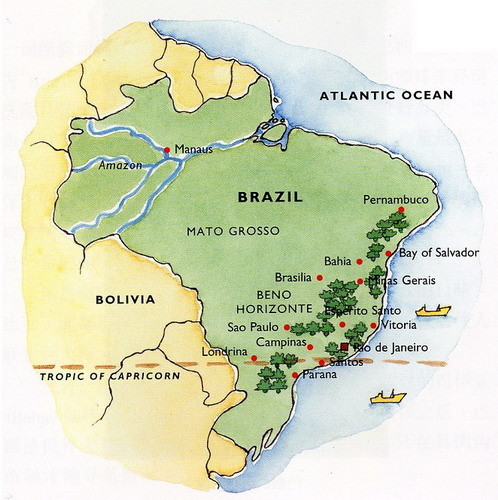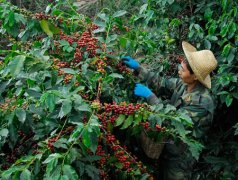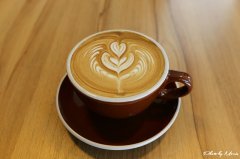Sumatran coffee, Sumatra coffee flavor, Indonesian coffee.
Sumatra (Sumatra):
Coffee in Sumatra is very complex and elusive. Although Sumatra is large, coffee is not grown all over the island. Coffee trees are grown in only the two northernmost provinces of the island's eight provinces, Aceh and Jiangsu: Aceh coffee is mainly produced in the Gayo Mountain mountains around Lake Lake Tawar, and most of the farmers in this area are local Gayo People aborigines. On the other hand, coffee in Jiangsu Province is mainly produced in the world's largest super crater lake-Lake Toba Lake (Tuba Lake) and south Lindong (Lintong) producing area, and the local farmers are mostly composed of Batak People aborigines. Due to many sharecropper producers and the use of their unique semi-washing treatment and lack of iron in the soil, coffee beans in this area have a special blue color at the stage of fresh beans.
The Gayo region is located in Aceh and Gayo, north of Sumatra. Coffee is grown on the slopes around the town of Takegon and Lake Tawar. The average planting height in the production area is between 1110 and 1300 meters. Coffee is planted by shade farmers under shade trees, showing a peculiar flavor, low depth and lively and full-bodied flavor. Aceh, the northernmost corner of Sumatra, is a fascinating and complex place. Aceh is not an area visited by ordinary people because of its long-term political instability. Gayo people are hardworking and have a firm personality, and nearly 20% of coffee processors are women. Under this semi-wet and semi-dry peeling and wet washing method, the coffee farm machine removes the peel and pulp of the red cherry fruit. There is still a lot of mucus on the coffee beans, and then stored in a fermentation tank for about a day (24 hours). The attached mucus is easily washed away with water. Then when the sun-drying reaches about 30% to 35% water content, the coffee bean shell is removed and it can be sold on the market. When the shell of the coffee bean is removed in this semi-wet and semi-dry state, the bean itself reveals a unique dark blue, which reduces the acidity and increases the alcohol thickness (body) of the coffee, making this unique Indonesian coffee.

Important Notice :
前街咖啡 FrontStreet Coffee has moved to new addredd:
FrontStreet Coffee Address: 315,Donghua East Road,GuangZhou
Tel:020 38364473
- Prev

Aceh, Sumatra, Ache Province, Gayo Mountains
Indonesian coffee is diverse in quality, most of which are named after island sources and markets such as Sumatra, Sulawesi, Jawa or Timur. The advantage of Indonesian coffee is that most coffees are characterized by strong, restrained flavors and lively moderate acidity. Indonesian Mandheling coffee is highly rated by Chinese
- Next

How to choose Espresso Coffee Machine in Cafe
Key points for the purchase of Espresso machines for a coffee shop nowadays, the Espresso machine is the heart of a cafe, no matter how it is cooked, but as long as it breaks down, the cafe will shut down. So how do you choose an Espresso machine that is suitable for your cafe? The machine is big
Related
- Does Rose Summer choose Blue, Green or Red? Detailed explanation of Rose Summer Coffee plots and Classification in Panamanian Jade Manor
- What is the difference between the origin, producing area, processing plant, cooperative and manor of coffee beans?
- How fine does the espresso powder fit? how to grind the espresso?
- Sca coffee roasting degree color card coffee roasting degree 8 roasting color values what do you mean?
- The practice of lattes: how to make lattes at home
- Introduction to Indonesian Fine Coffee beans-- Java Coffee producing area of Indonesian Arabica Coffee
- How much will the flavor of light and medium roasted rose summer be expressed? What baking level is rose summer suitable for?
- Introduction to the characteristics of washing, sun-drying or wet-planing coffee commonly used in Mantenin, Indonesia
- Price characteristics of Arabica Coffee Bean Starbucks introduction to Manning Coffee Bean Taste producing area Variety Manor
- What is the authentic Yega flavor? What are the flavor characteristics of the really excellent Yejasuffi coffee beans?

